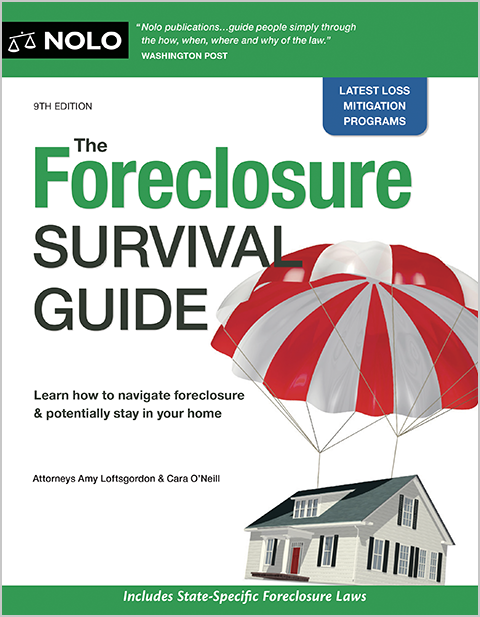Homeowners in California usually don’t get the right to redeem their home after a foreclosure sale.
In California, you might be able to repurchase or "redeem" your home after losing it in a foreclosure, but only under specific circumstances. Whether you can redeem your home depends primarily on whether the foreclosure was nonjudicial or judicial.
- Is California a Right of Redemption State?
- The Deficiency, If Any, Affects Your Redemption Rights After a Judicial Foreclosure
- Right to Redeem After a Judicial Foreclosure Under California Law
- How Will You Know If You Have a Right to Redeem?
- How Much You'll Have to Pay to Get Your Home Back
- How to Redeem Your Home After a Judicial Foreclosure
- If Possible, Don't Wait Until After the Foreclosure to Save Your Home
- What Is the Equitable Right of Redemption in California?
- Talk to a Foreclosure Lawyer
Is California a Right of Redemption State?
In a nutshell, here are the rules on redemption periods after foreclosures in California.
No Redemption Period After a Nonjudicial Foreclosure
If the foreclosure was nonjudicial, as most residential foreclosures in California are, you can't redeem the home after a foreclosure sale.
Because the vast majority of residential foreclosures in California are nonjudicial, most foreclosed homeowners don't get a redemption period after the sale.
Redemption Period for Judicial Foreclosures in California
If the foreclosure was judicial, you can redeem your home within three months or one year—or not at all—depending on the circumstances (see below).
The Deficiency, If Any, Affects Your Redemption Rights After a Judicial Foreclosure
To determine whether you can redeem your home after a judicial foreclosure in California, you must first understand the concept of a "deficiency." After a foreclosure sale, the total debt that the homeowner owes sometimes exceeds the foreclosure sale price. The difference between the sale price and the total debt is called a "deficiency."
In some states and under certain circumstances, the lender can seek a personal judgment, called a "deficiency judgment," against the borrower to recover the deficiency. Generally, once the lender gets a deficiency judgment, it may collect this amount—in our example, $50,000—from the borrower using regular collection methods like garnishing wages or levying a bank account.
Right to Redeem After a Judicial Foreclosure Under California Law
If the foreclosure is judicial, you may generally redeem the home within:
- three months after the foreclosure sale, if the proceeds from the sale satisfy the indebtedness, or
- one year if the sale resulted in a deficiency. (Cal. Civ. Code Proc. § 729.030).
Exceptions to This General Rule
But if the sale results in a deficiency and the lender waives a deficiency judgment, or California law prohibits a deficiency judgment in your situation, you don't get a redemption period. (Cal. Civ. Code Proc. § 726(e)).
Under California law, even if the lender uses a judicial foreclosure process, deficiency judgments aren't allowed in cases where the loan was:
- used to purchase a 1-4 unit dwelling that's owner-occupied (a "purchase money loan")
- seller financed, or
- a refinanced purchase money loan executed on or after January 1, 2013, except to the extent that new principal was advanced that wasn't applied to the purchase-money loan. The anti-deficiency protection doesn't cover fees, costs, and related expenses of the refinance. (Cal. Code Civ. Proc. § 580b).
How Will You Know If You Have a Right to Redeem?
If you get a redemption period after the sale, the levying officer who conducted the sale will deliver a notice to you, either personally or by mail. The notice will indicate the length of the redemption period. (Cal. Civ. Code Proc. § 729.050).
How Much You'll Have to Pay to Get Your Home Back
To redeem, you must reimburse the purchaser (the person or entity who bought it at the foreclosure sale) for the total price paid at the sale, plus all lawful charges such as:
- the amount of any assessments or taxes
- reasonable amounts for fire insurance, maintenance, upkeep, and repairs
- the amount of any prior liens that the purchaser paid
- interest, and
- if the purchaser at the sale has any subordinate liens, the amount of the purchaser's lien, plus interest. (Cal. Civ. Code Proc. § 729.060).
How to Redeem Your Home After a Judicial Foreclosure
To find out the exact cost to redeem, contact the purchaser. Then, you must pay the redemption amount to the levying officer who conducted the sale. (Cal. Civ. Code Proc. § 729.060).
If you and the purchaser disagree on the redemption amount, or the purchaser refuses to give you a redemption price, you may file a petition with the court for an order determining the amount due. When you file the petition, you must deposit the undisputed amount of the redemption price with the levying officer. The court will then determine the amount required to redeem the home. Be sure to file the petition and complete the redemption before the redemption period expires. (Cal. Civ. Code Proc. § 729.070).
Once you redeem, the levying officer will deliver the funds to the purchaser and promptly give a certificate of redemption to you, giving you the right to keep the home. (Cal. Civ. Code Proc. § 729.080).
If Possible, Don't Wait Until After the Foreclosure to Save Your Home
If you want to keep your home, it's usually better to take action before the foreclosure sale. By acting early, you'll likely have access to more options to save the property, like:
- paying off the past-due amounts to reinstate (catch up on) the loan, or
- working out an alternative to foreclosure that will allow you to keep the property, such as a mortgage modification, forbearance agreement, or repayment plan.
What Is the Equitable Right of Redemption in California?
California, like all states, provides an equitable right of redemption before a foreclosure sale. To redeem before the sale, you must pay off the mortgage debt (all of it, not just enough to bring the loan current), including principal, interest, fees, and costs. The equitable right to redeem ends at the foreclosure sale. However, to exercise the equitable right of redemption, you should send the payoff amount to the servicer well before this deadline.
If possible, present the funds in-person to the proper contact designated in the payoff quote, or wire the money well before the foreclosure sale. If a delay in the courier service happens or a bank processing error occurs and your money doesn't arrive in time, the foreclosure sale will happen.
Talk to a Foreclosure Lawyer
To get information about California foreclosure procedures, possible defenses to a foreclosure, or the procedures for redeeming the home after a foreclosure (if you get that right), consider talking to a local foreclosure lawyer.
If you need information about different loss mitigation options, a HUD-approved housing counselor is an excellent resource who can help you for free.
- Is California a Right of Redemption State?
- The Deficiency, If Any, Affects Your Redemption Rights After a Judicial Foreclosure
- Right to Redeem After a Judicial Foreclosure Under California Law
- How Will You Know If You Have a Right to Redeem?
- How Much You'll Have to Pay to Get Your Home Back
- How to Redeem Your Home After a Judicial Foreclosure
- If Possible, Don’t Wait Until After the Foreclosure to Save Your Home
- What Is the Equitable Right of Redemption in California?
- Talk to a Foreclosure Lawyer

